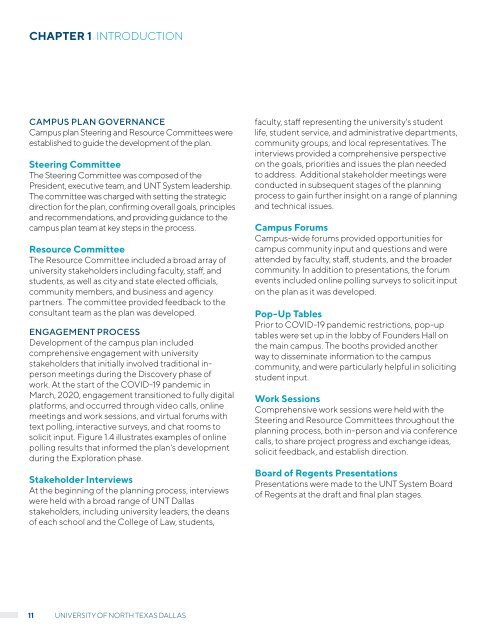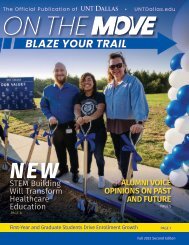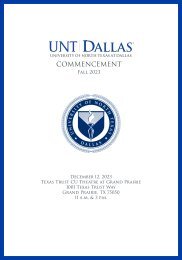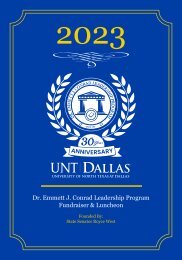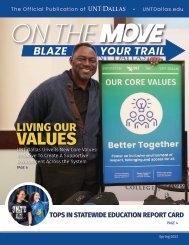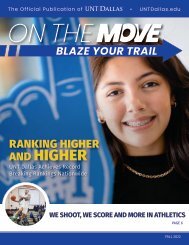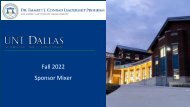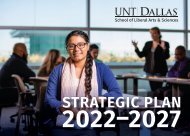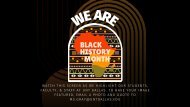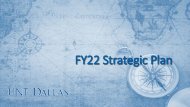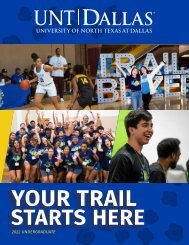UNT Dallas 2020 Master Plan
You also want an ePaper? Increase the reach of your titles
YUMPU automatically turns print PDFs into web optimized ePapers that Google loves.
CHAPTER 1 INTRODUCTION<br />
CAMPUS PLAN GOVERNANCE<br />
Campus plan Steering and Resource Committees were<br />
established to guide the development of the plan.<br />
Steering Committee<br />
The Steering Committee was composed of the<br />
President, executive team, and <strong>UNT</strong> System leadership.<br />
The committee was charged with setting the strategic<br />
direction for the plan, confirming overall goals, principles<br />
and recommendations, and providing guidance to the<br />
campus plan team at key steps in the process.<br />
Resource Committee<br />
The Resource Committee included a broad array of<br />
university stakeholders including faculty, staff, and<br />
students, as well as city and state elected officials,<br />
community members, and business and agency<br />
partners. The committee provided feedback to the<br />
consultant team as the plan was developed.<br />
ENGAGEMENT PROCESS<br />
Development of the campus plan included<br />
comprehensive engagement with university<br />
stakeholders that initially involved traditional inperson<br />
meetings during the Discovery phase of<br />
work. At the start of the COVID-19 pandemic in<br />
March, <strong>2020</strong>, engagement transitioned to fully digital<br />
platforms, and occurred through video calls, online<br />
meetings and work sessions, and virtual forums with<br />
text polling, interactive surveys, and chat rooms to<br />
solicit input. Figure 1.4 illustrates examples of online<br />
polling results that informed the plan's development<br />
during the Exploration phase.<br />
Stakeholder Interviews<br />
At the beginning of the planning process, interviews<br />
were held with a broad range of <strong>UNT</strong> <strong>Dallas</strong><br />
stakeholders, including university leaders, the deans<br />
of each school and the College of Law, students,<br />
faculty, staff representing the university's student<br />
life, student service, and administrative departments,<br />
community groups, and local representatives. The<br />
interviews provided a comprehensive perspective<br />
on the goals, priorities and issues the plan needed<br />
to address. Additional stakeholder meetings were<br />
conducted in subsequent stages of the planning<br />
process to gain further insight on a range of planning<br />
and technical issues.<br />
Campus Forums<br />
Campus-wide forums provided opportunities for<br />
campus community input and questions and were<br />
attended by faculty, staff, students, and the broader<br />
community. In addition to presentations, the forum<br />
events included online polling surveys to solicit input<br />
on the plan as it was developed.<br />
Pop-Up Tables<br />
Prior to COVID-19 pandemic restrictions, pop-up<br />
tables were set up in the lobby of Founders Hall on<br />
the main campus. The booths provided another<br />
way to disseminate information to the campus<br />
community, and were particularly helpful in soliciting<br />
student input.<br />
Work Sessions<br />
Comprehensive work sessions were held with the<br />
Steering and Resource Committees throughout the<br />
planning process, both in-person and via conference<br />
calls, to share project progress and exchange ideas,<br />
solicit feedback, and establish direction.<br />
Board of Regents Presentations<br />
Presentations were made to the <strong>UNT</strong> System Board<br />
of Regents at the draft and final plan stages.<br />
11<br />
UNIVERSITY OF NORTH TEXAS DALLAS


